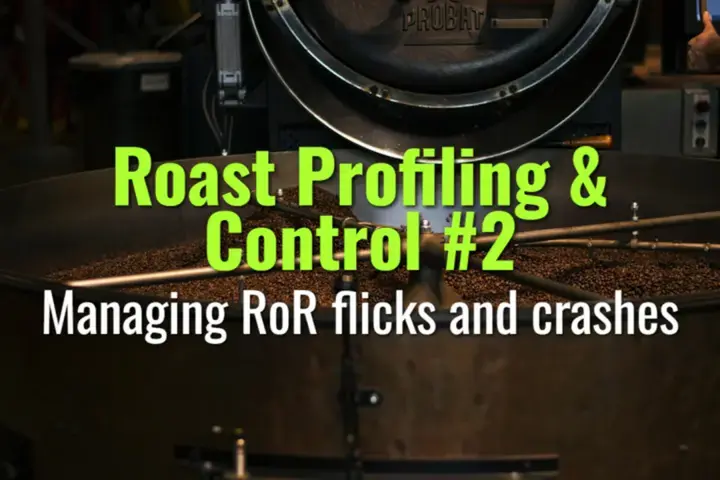Managing RoR flicks and crashes
This topic explains how to monitor and control sudden fluctuations in Rate of Rise (RoR) during roasting, ensuring a smooth, predictable roast curve.
- Coffee Basics Nerds
- 1 min read

Key Concepts
-
Understanding RoR Flicks:
-
A flick is a temporary spike or dip in the RoR caused by sudden changes in heat transfer or airflow.
-
Flicks often occur at turning point, when beans begin absorbing heat more efficiently.
-
RoR Crashes:
-
A crash is a sustained drop in RoR, usually from overloading the roaster, insufficient gas, or excessive moisture in beans.
-
Can lead to stalled Maillard reactions, uneven development, or extended roast times.
-
Causes:
-
Inconsistent drum speed or airflow.
-
Incorrect charge temperature for bean density.
-
Rapid addition of large bean batches.
-
Moisture content variance.
-
Management Strategies:
-
Pre-plan roast curve to anticipate energy needs.
-
Use gradual adjustments in gas, airflow, and drum speed.
-
Monitor RoR closely during critical phases (turning point, Maillard, first crack).
-
Segment beans by density and moisture when possible.
-
Practical Tools:
-
Software alerts for RoR deviations.
-
Manual interventions using gas or airflow to smooth spikes.
-
Post-roast analysis to refine future profiles.
Summary
Effectively managing RoR flicks and crashes ensures consistent bean development and reduces defects. By understanding the underlying causes and using real-time monitoring combined with controlled adjustments, roasters can maintain a predictable, stable roasting curve for optimal flavor extraction.